This event summary and history were archived to the CS News blog on 3 October 2018 as we reorganize the CS website.
2015 marks 32 (2^5) years since the first graduates of the Wellesley CS Department.
This year, immediately following our Cirque du CS, the department hosted a special anniversary celebration. According to the Minutes of Academic Council, the Department of Computer Science, and a CS Major, were voted into existence on March 11, 1982, and the department course listings first appeared in the 1982-83 catalog. It has been 32 years since the first CS majors graduated from this new department. This may seem like an unusual anniversary to celebrate, but not for a computer scientist! We marked this event with reflections on the history of the department by Randy Shull and Eric Roberts (the first Chair of the CS department), future vision of the CS department from Orit Shaer, memories of the department from alumnae, and lots of opportunity for sharing stories and experiences between CS students, faculty, and alumnae. Artifacts, old photos and documents were on display, showcasing the history of the department.
The happenings were documented on Twitter (@WellesleyCS) under the hashtag #WellesleyCS32
See the video message on YouTube from Takis Metaxas and Lyn Turbak.
A Brief History of Computer Science at Wellesley College (ca. 2012)
The narrative below, written a few years before this anniversary, traced department history up through the early 2000s. For a visual look at department history, check out this timeline of Wellesley CS, developed by Sunnia Ye ’17 and Eni Mustafaraj.
At its first official meeting, the Computer Science Department decided to celebrate its anniversaries in powers of two years from its inception. Parties were rampant in those early days. However, things began to thin out, so we established the bi-annual Cirque du CS in 2005, as a way to celebrate scholarship with current and past students and faculty. This brief history is being updated as our next anniversary, 2^5 approaches. Now seems a good time to look back and take stock of the past 30 years. It was a wild and woolly ride.
Prehistoric Computing
Computer science at Wellesley College reaches at least as far back as the late sixties when two members of the Massachusetts Institute of Technology faculty conducted a trial course in automated computation. Using computers in those days meant batch processing at MIT. Things changed in 1969 when Wellesley College rented its own IBM 1130 and began teaching computer science courses using the APL programming language.
Timesharing was the watch word of the early seventies. Wellesley College began experimenting with a part-time port to Dartmouth Timesharing (DTSS) early in the decade. The College continued to maintain several part-time ports to DTSS until 1976. In that year, a National Science Foundation CAUSE grant funded the purchase of a DECsystem-20, known affectionately as DECStar (rhymes with Dexter, where it’s @). Throughout the seventies, Wellesley offered one to two computer science courses annually. Enrollments climbed from 48 students in 1972 to 241 in 1979.
Birth of a Department
Realizing the importance of this new discipline, not to mention the importance of exploding enrollments, Wellesley College hired its first full-time computer science faculty member in 1980. Four additional faculty members were added over the next three years.
The new hires dug right in. By the fall of 1982, a computer science curriculum was place. Computer Science 110, taught in BASIC and a Turtle Logo language developed at Wellesley, became one of the College’s largest courses. Courses in data structures and computer organization promised to be equally successful. Total enrollments grow to 643 during the 1982-83 academic year.
The Computer Science Department was created in the Spring of 1982, and for the first time Wellesley College could offer students a computer science major. The computer science curriculum consisted of a total of ten distinct courses, although only eight were required for the degree. The first majors would graduate the following year.
Growing Pains
Rapid development of computer science at Wellesley College was not without its problems. DECStar, by now upgraded to a DECsystem-60, was pushing the outer envelop of its computational ability. Access to computer terminals was severely limited and tensions in the single campus terminal room were on the rise. Hiring and maintaining faculty was difficult in the bull computer market of the early eighties.
The Computer Science Department moved quickly to address these problems. In the fall of 1985, the department purchased its first dedicated computer system, a MicroVAX II running the UNIX operating system (originally named Greece, but dubbed Bambam by the computer science majors.) Through a generous grant from the AT&T Corporation, computer science faculty became among the first on campus to have microcomputers on their desks. These machines were networked to DECStar through the beginnings of Wellesley’s LAN and the College was connected to both CSNet and BITNET, forerunners to the modern Internet. A computer science terminal area, built in the mezzanine of the Science Center Library, promptly became known as Bedrock (Bambam lived there), quickly became home to students and faculty.
Computer Science at a liberal arts college was still new. However, a consensus on computer science curriculum and major requirements was beginning to emerge among faculty at many like-minded institutions. Working with peers through NECUSE and other professional organizations, Wellesley College faculty began a major revision of the curriculum. Computer Science 111 replaced Computer Science 110 as the entry to the major. Pascal replaced BASIC as the first language. Theory and foundation courses migrated from the 300 level to the 200 hundred level in order to provide students a firm grounding in the basics early in their major. Advanced courses such as Compiler Design and Construction, Computer Graphics, and Operating Systems were moved to the UNIX based MicroVAX and were taught using the C programming language. Digital laboratories were created for hardware oriented courses such as Computer Organization and Computer Architecture.
The Nineties
Computing continued to change and to grow. DECStar retired and was replace by a VAX cluster (Lucy, Sallie, and Marcie). The campus LAN was completed and the College Workstation Project put a PC or Macintosh on every desk. Dorm rooms were wired to the LAN, and computer areas were springing up all over campus.
Computer Science by now had outgrown its quarters in Bedrock and Bambam was showing signs of middle age. In the fall of 1990, the International Business Machines Corporation granted the computer science department a half million dollars in RISC RS6000 equipment. Several advanced programming courses were immediately moved to take advantage of this new technology. Planning was underway for yet another addition to the Science Center in order to house a new computer equipped classroom, graphics and digital electronics laboratories, faculty offices and several large workstation areas.
Fall 1991 was hectic. The Science Center Addition opened five days before classes began. Fifteen RS6000 workstations and associated peripherals, central to the fall curriculum, had to be installed in the new minifocus. The digital electronics laboratory was only partially equipped. Workstations flickered, operating systems crashed, and network problems abound. Miraculously, all systems went on-line as scheduled. The fall of 1991 was also the beginning of a renaissance in computer science hires. Dynamic entering faculty and staff reenergized the department and offered exciting new research opportunities for students.
While advanced courses moved to the RS6000 RISC stations, Apple Macintoshes replaced the VAX cluster as the platform for introductory students. In 1992, with the generous support of the Apple Computer Corporation, and with the help of Information Technology Services, the department installed 15 Macintosh II ci color computers into Science Center E101. The old version of CS110, still taught in BASIC, was thrown out and a new project-based CS110, taught in HyperCard, developed in its place. CS111 was updated using THINK Pascal and these revisions began rippling through the curriculum.
As the decade progressed, the curriculum continued to expand and change. CS110 entered its third incarnation as Computer Science and the Internet. While retaining its project orientation, the course began to use the Internet as a domain to explore fundamental concepts in computer science. Students practiced these concepts in the context of building websites for clients using HTML, CSS, and JavaScript. In Fall, 1997, we became among the first schools to adopt Java in our introductory curriculum. and CS111 students began learning introductory programming and problem solving in the context of bagel-eating buggles, turtles, recursive pictures, animations, and other Java-based microworlds. Robotic Design Studio (joint with Physics), in which students learned to build and program Lego robots, became a popular annual Wintersession course. CS215 The Art and Science of Multimedia (joint with Art) was developed to create a bridge between Computer Science and Art; this was the first step toward creating the Media Arts and Sciences major. New 300-level courses, such as Parallel Machines and Their Algorithms and Visual Processing by Computer and Biological Vision Systems, were developed to reflect exciting areas in which faculty had expertise.
A New Century
The dot-com boom that fueled the expansion of the department in the late nineties was followed by the dot-com bust. Wellesley was not immune to the damaging effects of a declining computer industry, and course enrollments and majors dropped significantly. For example, enrollments in CS230 Data Structures plummeted from 27 in Fall, 2001, to 7 in Fall, 2002. CS course enrollments reached a low in the 2007-08 academic year.
Fortunately this drop was again followed by rapid growth. While these fluctuations were due in part to external factors driving nationwide trends in computer science enrollments, the decline in the early 2000s triggered a call to action for the department, aimed at creating greater visibility for the exciting work of our students. In 2005, we held the first of our bi-annual Cirque du CS celebrations that showcase student research and project work in courses at all levels of our curriculum, and bring together faculty, students, alumnae, friends and family. Students became more proactive in giving presentations on their CS research and internship work at the annual College-wide Ruhlman and Tanner conferences. A highlight of this time was increased student participation in research and attendance at conferences such as the New England Undergraduate Computing Symposium (NEUCS), first held at Wellesley College in 2009, the Annual Conference of the Northeast Region of the Consortium for Computing Sciences in Colleges (CCSCNE), the Grace Hopper Celebration of Women in Computing, and other scientific conferences.
We introduced additional introductory courses to accommodate a broader range of student interests and to take advantage of newer technology. Computation for the Sciences (CS 112) taught students in the sciences how to use computers effectively through the use of the MATLAB programming language. The Socio-Techno Web (CS 114) was geared toward learning about computer science in the context of social aspects of computing. Inventing Mobile Apps (CS 117) taught students how to create apps for mobile devices as a vehicle for learning about the big ideas of computer science and contemporary issues of technology.
New middle and upper level courses were developed to reflect the evolution of the field: Computer Networks, Systems Programming, Databases with Web Interfaces, E-Commerce, Computer Security, Foundations of Cryptography Web Search and Data Mining, Computational Biology, Human Computer Interaction, and Tangible User Interfaces.
Other new courses were taught by visiting scholars; in 2007, the Norma Wilentz Hess Fellowship was established, giving the department the opportunity to hire outstanding teachers and scholars for a period of two years to teach exciting new areas of computer science not already covered by current faculty members. Courses taught by Hess Fellows included The Science of Networks, Research Methods in Developmental Robotics, Games, Web Mashups, The Intelligent Web, and Quantifying the World.
The computing facilities of the department continued to evolve during this period. The early Macintoshes had been replaced several times over by the year 2000. The RS6000 workstations too were long gone; computer science installed Macintosh computers in the classroom for introductory courses, and Windows and Linux boxes in the lab for advanced ones. A new lab room (SCI 160A) was constructed containing Macs, which displayed remote X windows from the Linux machines, and thus became the primary room for teaching labs requiring Linux. A Human Computer Interaction (HCI) lab was equipped, with a Microsoft Surface, a variety of microcontrollers and toolkits, and diverse mobile devices (iPod Touch, Window Mobile, Android), for investigating next-generation human-computer interactions including tangible, table-top, and embodied user interfaces. An Engineering Lab was outfitted, as part of the new Engineering Certificate program (but also used for CS courses and research), featuring a laser cutter, 3D printer, and computer-aided design software.
As technology became more and more important to all academic endeavors, the interdisciplinary ties between the Computer Science department and other departments strengthened. The Media Arts and Sciences program was co-directed by the CS and Art departments. CS faculty served on the advisory committees for the Neuroscience and Cognitive and Linguistic Sciences programs, and advised students pursuing the Bioinformatics individual major. The Robotics Design Studio course was co-taught by CS and Physics. CS faculty were involved in engineering efforts at Wellesley, including teaching Introduction to Engineering and building bridges to engineering opportunities at MIT and Olin College.
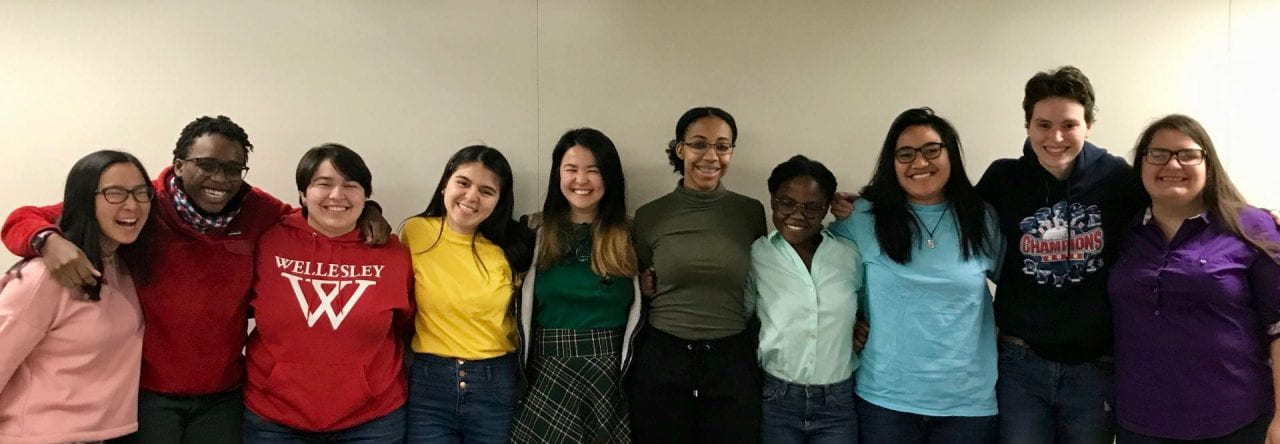
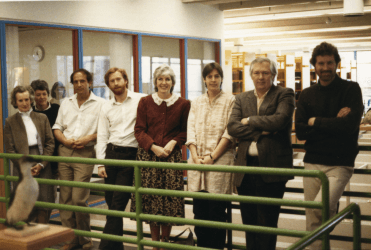
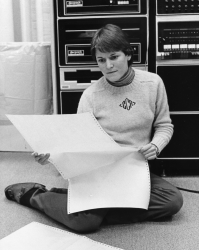
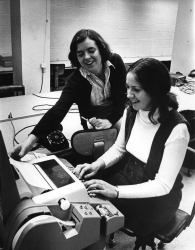
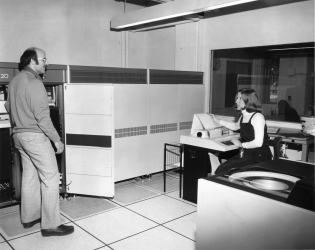

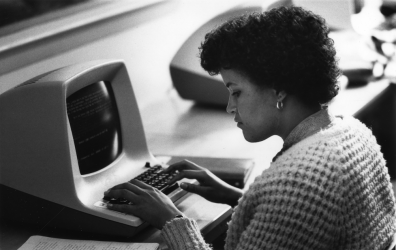
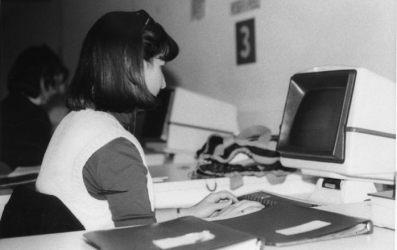
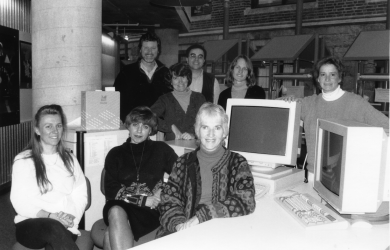
Leave a Reply